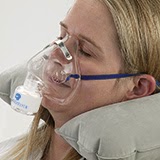Got Stage Fright? 5 Strategies to Conquer Performance Jitters
We all know what that feels like: clammy hands, dry mouth, heart racing, trouble breathing or focusing. It feels like we lose confidence in what we’re about to do. And we are disconnected from the joy of doing it while our mind and body have been hijacked by fear.
But what can
we do about it?
In this
video I show you 5 strategies on conquering stage fright.
Step 1: Preparation, preparation,
preparation. You probably know the New York city real estate mantra location,
location, location. For a performer, it’s the capitalized triple P. The better
you’re prepared the less likely you will be hit by paralyzing stage fright. You
may still get butterflies in your stomach, but to some extent we do need those.
Apart from showing that you care, butterflies also give you energy.
If you have
a performance coming up, do run-throughs in front of your parents, your best
friend, your neighbor, your dog. Or imagine all these people in the room while
you run your program, or sections of it.
Step 2: Positive, distanced self-talk. What
do I mean by that? You address yourself by name and follow that up with a
positive, encouraging statement, the kind of quick pep talk you would give to a
friend. For instance, Elisabeth, you got this. Elisabeth, you have prepared for
this, you are ready. Elisabeth, have some fun! According to Ethan Kross, the
author of the book “Chatter”, this kind of distanced self-talk is linked to
less ruminating, or chatter and improved performance under stress.
Step 3: Lay off the coffee! I loooove
coffee, but when I’m nervous it just enhances the anxiety. So cut down on it if
you are prone to anxiety and stage fright, or skip it all together on the day
of a performance,.
Step 4: Humming. This may seem odd, but
humming in combination with inhaling through your nose helps reduce stress.
Humming helps switch out of a fight-or-flight state run by the sympathetic
nervous system and into what is often called a tend-and-befriend state, run by
the parasympathetic nervous system. Plus, when we hum, we bring about the
release of happy hormones such as endorphins and oxytocin. Here’s how you do
it. Sit upright in a chair, set a timer to 5 minutes, slowly breathe in through
your nose and hum a comfortable pitch. Continue breathing through your nose and
humming. Just understand that this is not a vocal exercise. To learn more about
humming and other great breathing exercises, check out Kim Kraushar’s work on
her site www.breathbydesign.ca
Step 5: Paced breathing: Slow inhale and exhale through your nose. This is
something you can do when walking down the road, or while nervously pacing
backstage. Again focus on breathing through your nose. This automatically helps
slow down your breathing. Inhale for 4 counts, exhale for 6 counts. Rinse,
repeat. Do this for at least 5 minutes. Focus on how the breath feels in your
body, how it moves your belly, how it feels in your throat. The more you are
able to focus on your breath, the less time you will be spending in your head
obsessing over all the things that can go wrong.
And then go
out and allow yourself to feel the joy of what you’re doing.
Would you like to get access to a free video on some of my favorite vocal warm ups? Click HERE, watch, and sing!

Comments
Post a Comment